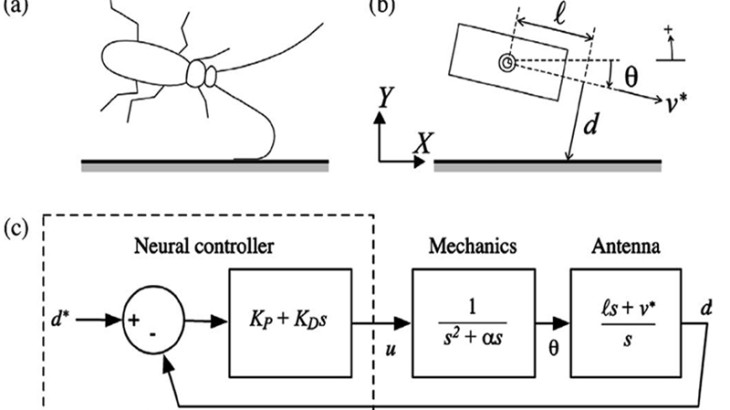Animals must sense their environment in order to navigate. American cockroaches (Periplaneta americana L.) in the natural world often face navigation challenges in cluttered, low-light environments. To supplement their vision, they use their antenna as tactile probes. They can track surfaces with their long antennae by letting the antenna bend against the surface and rapidly turn back and forth when their antennae are deflected. Simple biomechanical control models show that this tracking is unstable if the animals only sense proportional information (i.e. the distance from the surface). They also need derivative information (i.e. how fast they are approaching the wall). Using a restrained cockroach preparation, we fed in sensory stimuli to the antenna. While recording extracellularly from the antennal nerve we deflected the antenna with an actuated wall segment. Neural responses support the proportional-derivative control model. Further, individual neuron recordings suggest that this sensory signal arises from the population encoding of many mechanosensors distributed such that the antenna acts as a delay line. A delay line is where sensors distributed over an area (in this case the length of the antenna) provide information and alter coding based on how long it takes for signals to pass down different neurons. This temporal processing caused the control signal of the primary sensory neurons themselves to be filtered to the appropriate time course for wall-tracking. Collaborating with Professor Noah Cowan (Johns Hopkins U.), we have translated these results into biologically inspired, artificial antennae that enable robots to use tactile navigation like the cockroach.
